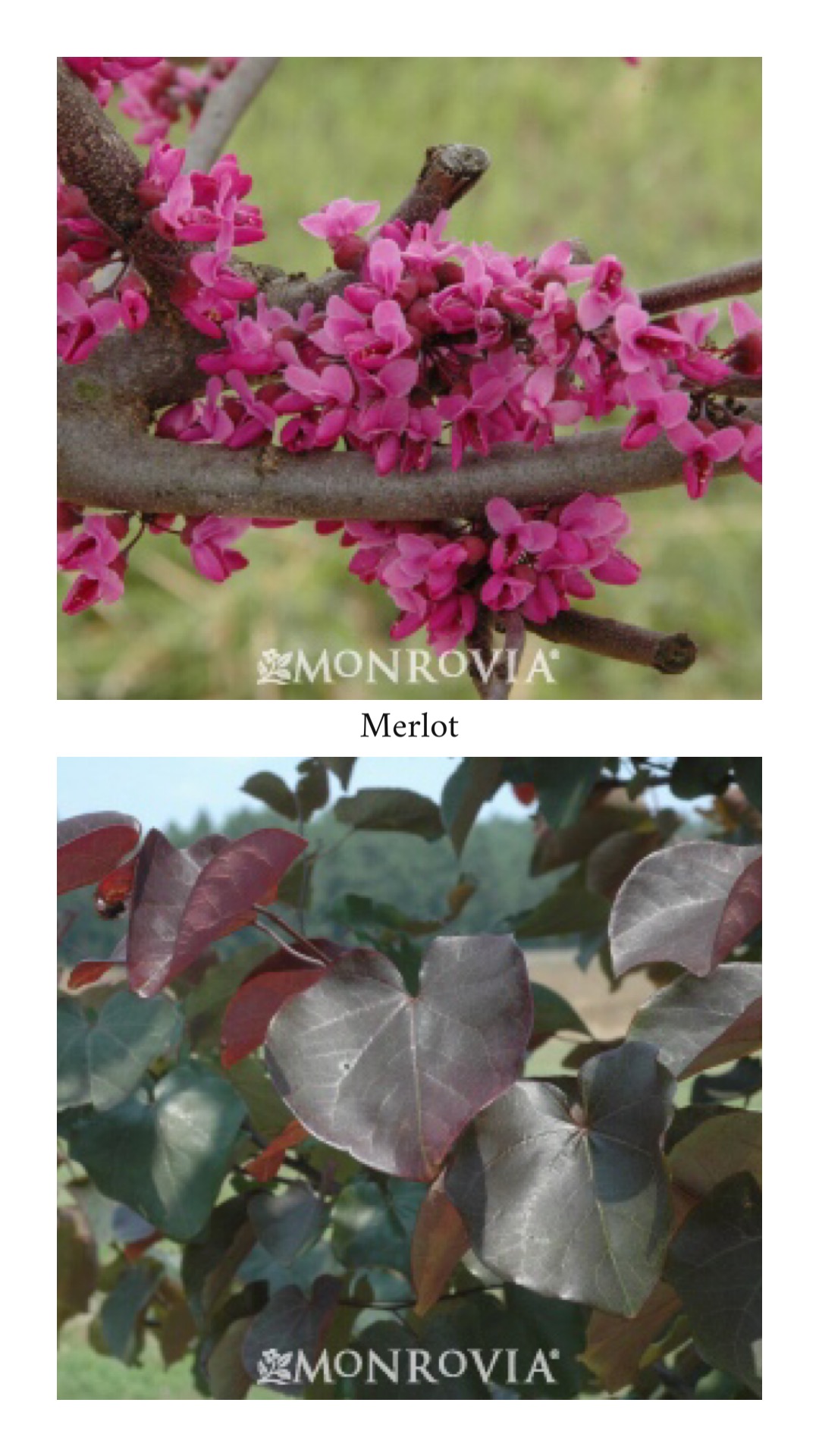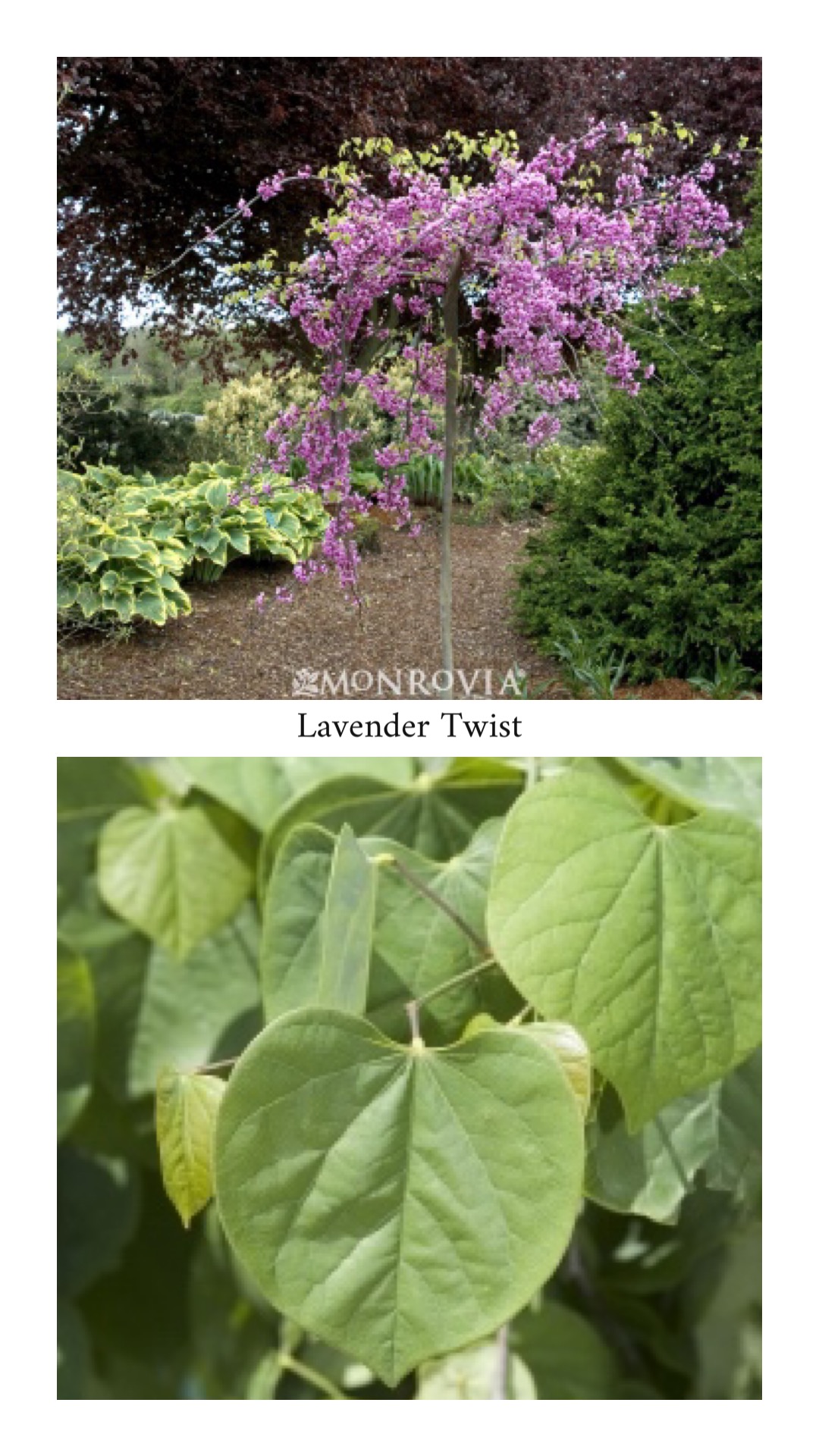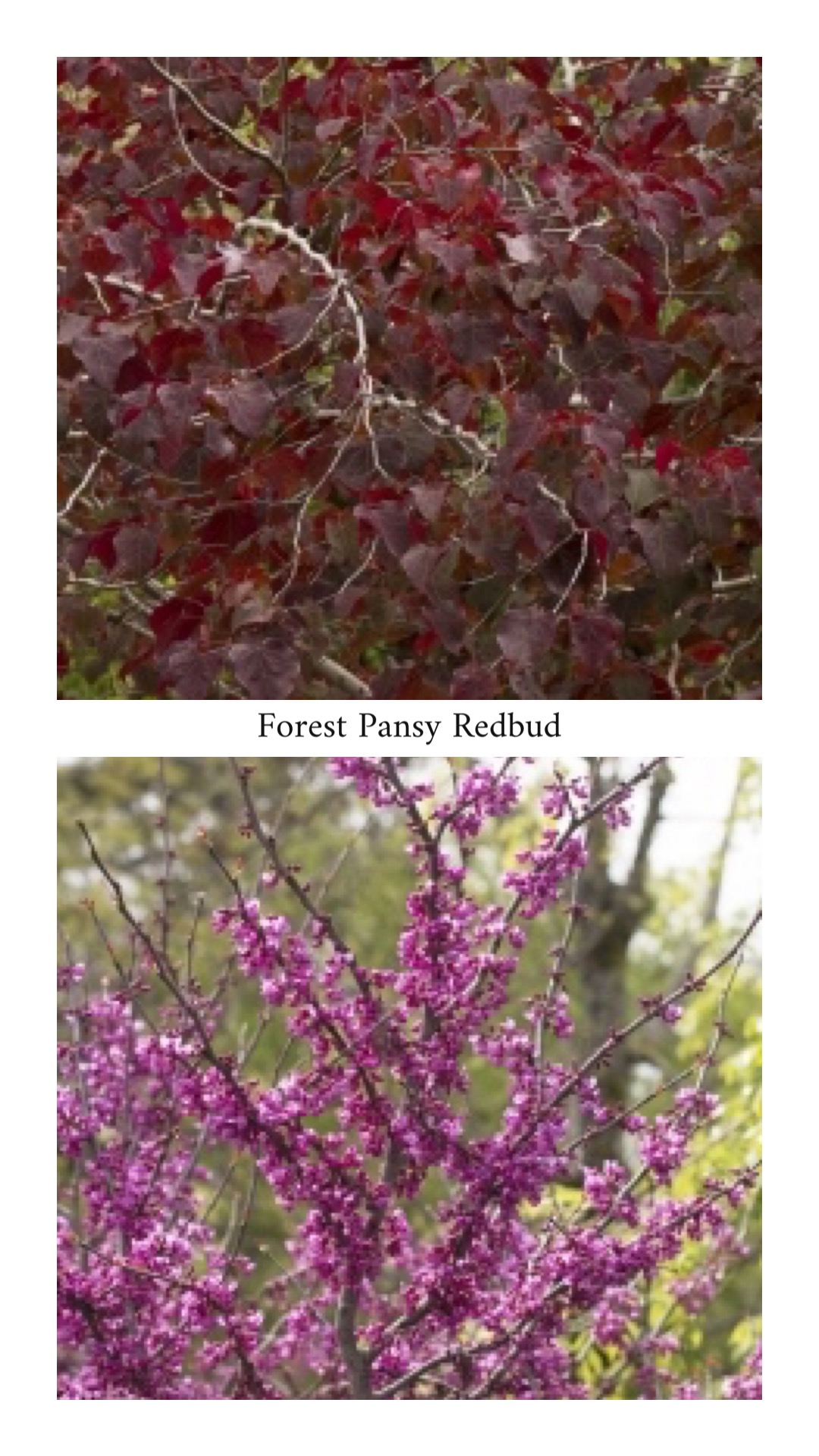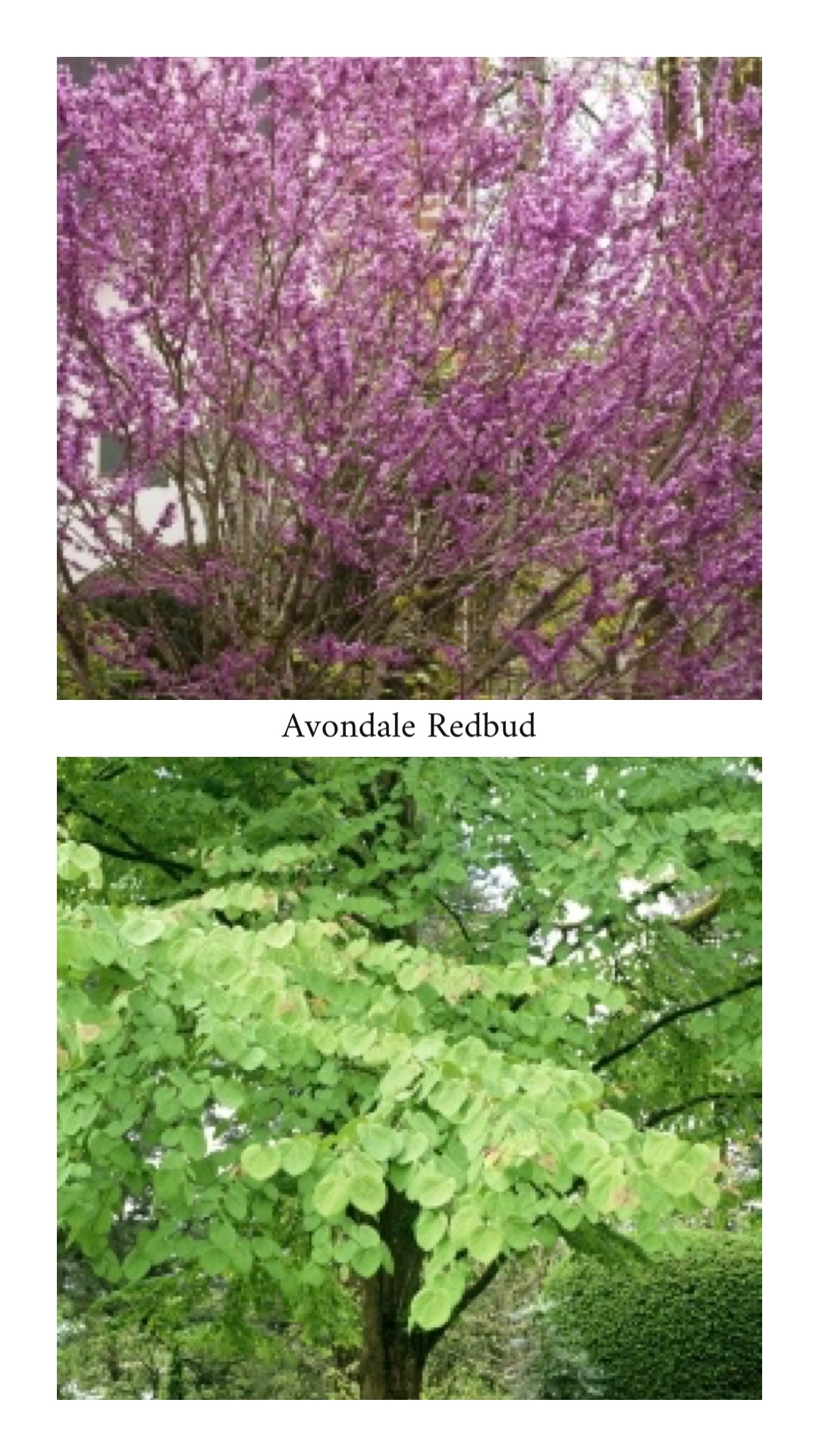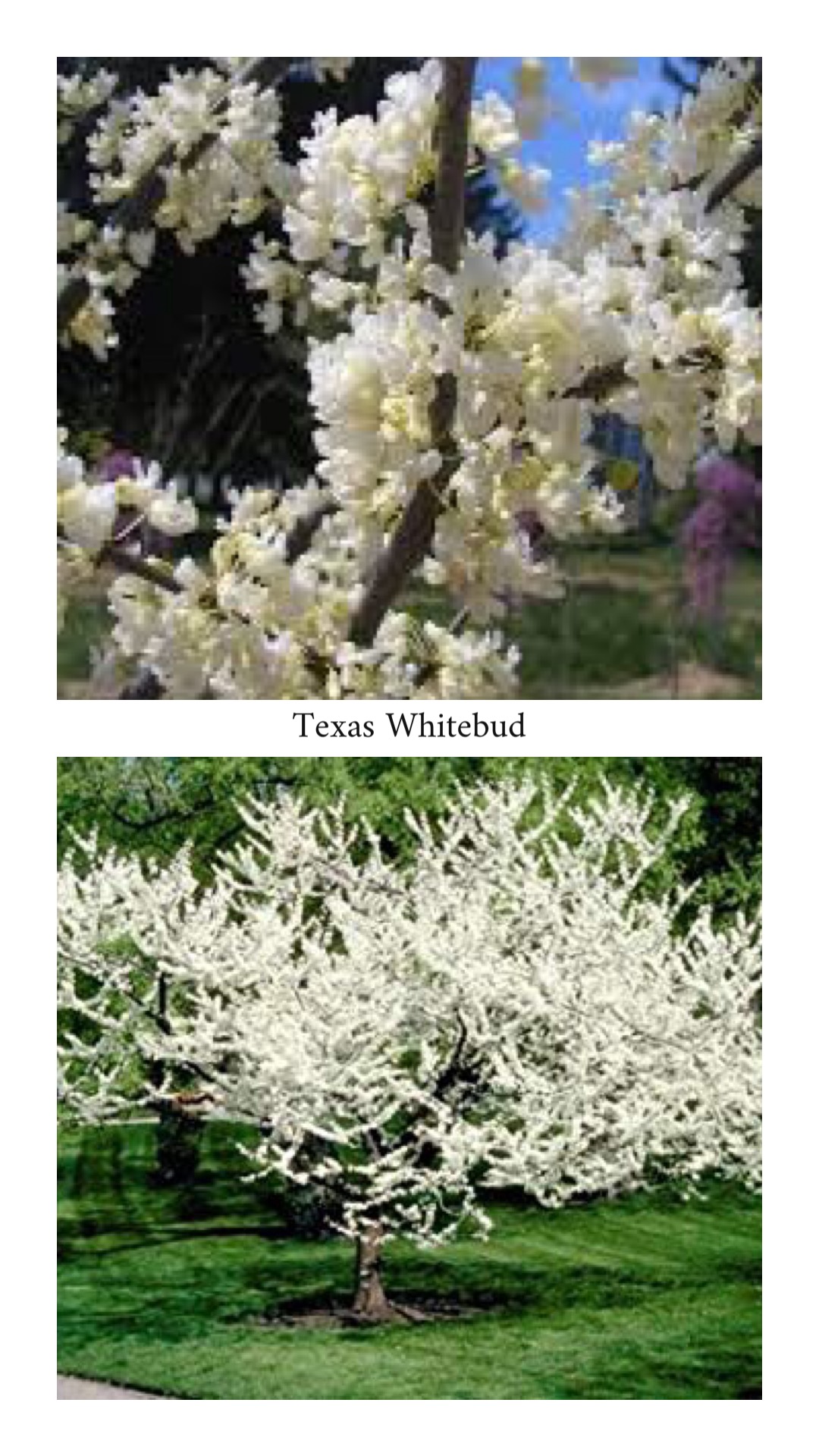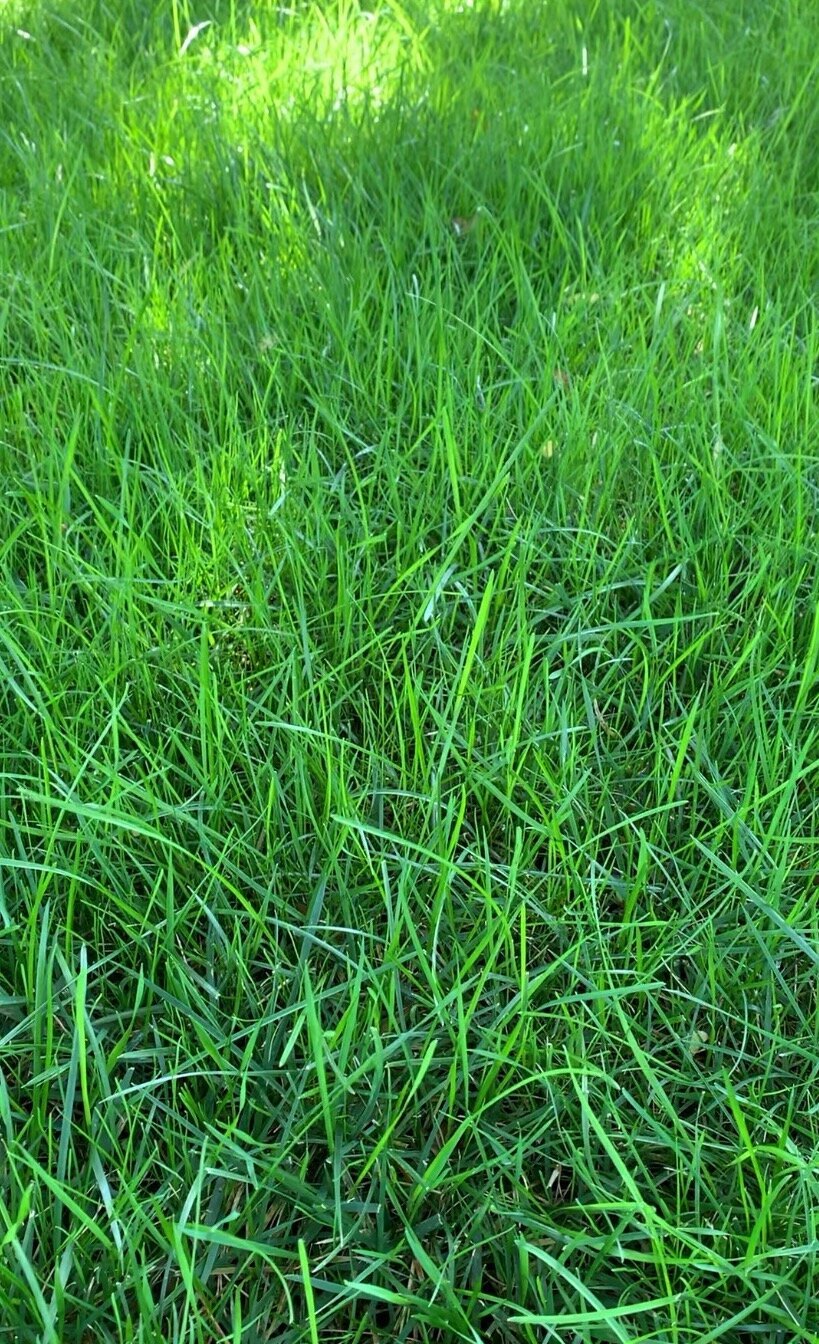
When rain is no longer helpful...
Our goal is to keep you informed of lawn and landscape issues we are experiencing each week as we visit sites in the Oklahoma City area. I’m sure it is no surprise to you that we are starting to see plant problems related to the excessive amount of rainfall we are receiving.
Normal annual rainfall for the Oklahoma City area is 36.5”. In the past 365 days, the metro area has received nearly 54”. In the last 30 days, 12.5” has fallen with 6” in the last week.
It is common for us to be discussing watering tips as we head into the summer. I have only one watering tip today – turn your irrigation system off! Early this morning I witnessed 3 irrigation systems running in my neighborhood alone. Established plant materials – lawns, shrubs, trees, flowers – are showing signs of over watering stress.
Roots are the foundation to a healthy plant. They are the primary source of water, nutrients, and oxygen. Yes, oxygen. Plants breath through their root system. Plants, just like humans, can drown when water replaces air.
So, why is it common for so many to water more when a plant is struggling because of too much water? Plants respond in very similar ways to draught and too much water. The first symptom of too much water is yellowing leaves followed by wilting. The wilting leaves, whether it is too much or too little water, look nearly the same. When you see wilting leaves, you must stop and think about the conditions and check the soil.
For example: A couple of weeks ago I planted a tropical hibiscus in a patio pot. This week I noticed it was wilting, grabbed a pitcher full of water and headed out the door to water it, all the while wondering why it would be dry. What I discovered was a plant sitting in water because of clogged drain holes. Either way, the hibiscus was wilting. The same is true about your lawn, your flowers, your shrubs and your trees. It is just a lot easier to diagnose when it’s in a container.
Here are a few problems we noticed this week:
Yew – A plant that is notorious for quickly yellowing and dying in wet or waterlogged soil. They can be temperamental, but given the right conditions with moist, but well drained soil, they do well. They won’t tolerate waterlogged soils and this spring many are finding they are in just too wet of soil. As with many shrubs, the first signs of yellowing suggest too much water.
Much of what we discussed today are climate issues we can’t control. But, the excessive rainfall has reminded me why a few things are very important:
1. Water based only on need. Too much water damages plant roots.
2. Always plant a little above grade so that excess water will move away from the plant.
3. Select the right plants for the right location. This is more than just sun or shade. It includes soil type and water requirements.
Remember – the most common problem of plant stress is unhealthy roots. This applies to lawns, flowers, trees and shrubs.
Lorne Hall
Hall | Stewart Lawn + Landscape
(405)367-3873
Oklahoma's State Tree is really showing off this week!
There are two things you can count on in early April – the redbud trees will be putting on a show and I will be talking about the them.
Our goal for our weekly email is to discuss what we are seeing in the lawn and landscapes we visit. The Oklahoma State Tree, Cercis Canadensis, Redbud, has been creating a lot of attention this week.
Michael Dirr, easily considered America’s leading woody plant expert, wrote in his textbook Dirr’s Hardy Trees and Shrubs about Redbuds: “No equal, no competitor, can be found among small flowering landscape trees – the stage is reserved for this native species.”
I agree!
Eastern Redbuds are native to the Eastern US from Massachusetts to Florida extending west to Kansas, Oklahoma, and Texas. In the native landscape, you typically see them as understory trees in wooded areas. In late March or early April, you can’t miss them. Their pink to lavender flowers brighten the landscape before leaves bud on most trees. They grow in full sun and partial shade. They tolerate clay, loam and sandy soils. They adapt to a wide range of soil pH as well as soil moisture.
But, the native Eastern Redbud has it shortcomings. During the summer, the leaves are a disappointment in Oklahoma. The hot winds of July and August leave the native Redbud leaves tattered and bruised.
Thankfully, Oklahoma has an answer to the Eastern Redbud – the ‘Oklahoma’ Redbud, Cercis Canadensis var. texensis ‘Oklahoma’.
The ‘Oklahoma’ Redbud has a deeper purple color bloom and a waxy, thick, dark green, heart-shaped leaf. The ‘Oklahoma’ is far richer in color in the spring and carries beautiful foliage through the hottest of summers. In the fall, the leaves turn golden yellow.
‘Oklahoma’ Redbuds can be used in every imaginable landscape application. They are excellent lawn trees. They are dynamic in groupings. And they add interest to landscape beds.
Redbuds grow 15-18’ tall and have a spread of 15’ at maturity. Their small tree nature tends to produce a low branching, rounded top-growing pattern.
The Redbud rooting pattern can lead to difficulty in transplanting. If selecting a balled and burlap tree, it is best if the tree is harvested and replanted during the dormant season. A good size to start with is a 1.5” to 2” caliper tree. If you are planting a Redbud during the growing season, I would recommend purchasing a container grown tree, as there is less transplant shock.
Other varieties of Redbud include:
'Merlot' is a new hybrid with dark foliage similar to the 'forest pansy' but has glossier leaves that take the summer heat similar to the 'Oklahoma' redbud.
'Lavender Twist' is a weeping redbud with rosy-pink flowers. The umbrella branching pattern only reaches 5-6' tall making it a good specimen for a focal point in the landscape.
‘Forest Pansy’ which has a shimmering, reddish-purple leaf. This Redbud is a real winner in the spring. But, in the early summer the leaves fade worse than the Eastern Redbud leaves. If you decide to try this variety, select a place in your landscape where the tree will be shielded from the hot west sun and southern winds.
'Avondale' is a little smaller reaching only 10-12' in height and width. It is one of the most profuse flowering redbuds with very showy dark rose-purple flowers. It also has a glossy, heart-shaped leaf.
Texas Whitebud’ is a white blooming variety of the ‘Oklahoma’. It also has waxy, dark green leaves through the summer.
One final reason why I think the Redbud is one of our best trees - It blooms only on the old wood! Stop and look at one. You will notice that the last 6-12” of each branch doesn’t have any blooms. All of last year’s growth is void of color. All the color is on the two-year and older wood, occasionally even the trunk will bloom. Typically, trees and shrubs bloom on the end of the branches. Early blooming plants bloom on the growth from last year. Summer bloomers, such as the Crape Myrtle, bloom on the new growth from the spring. The Redbud is unique in only blooming on old wood.
Jim Paluch in his book, Leaving a Legacy, tells the story of seven senior citizens who discover the magic of the Redbud blooming only on old wood. They were inspired to not spend their later years withering away. They asked, “If a Redbud can bloom on its old wood, why can’t we?” The seven men struck out to make a difference in their community during their elder years.
Oklahoma couldn’t have selected a better all-around tree for the state tree. There is no better small flowering tree than the Redbud, especially the ‘Oklahoma’ Redbud.
Take a walk around your neighborhood, go on a bike ride, or take a drive. You are sure to find redbuds along your route adding a bright splash of color to the spring landscape.
Lorne Hall
What says, "it's spring!" to you?
My definition of anticipation – waiting for the spring landscape to burst with color!
This week was the week I have been waiting for since the first cool freeze last fall. Warmer days, fewer nights in the 30’s, and longer days have yielded fescue lawns turning greener every day, trees with swelling buds, and shrubs adding color to the landscape.
I love spring!
This time of year it is common for me to see a plant bursting with color and declare it to be my favorite plant. Only to declare a new favorite the next day.
Since I don’t have the time to write about all my favorites and you don’t have the time to read about them, I have narrowed the list to three spring favorite perennials, three shrubs, and three trees.
PERENNIALS
Creeping Phlox (Phlox stolonifera). The first to welcome spring each year. Creeping phlox produces a spring-like carpet in pastel hues of white, lavender, red and pink. Creeping phlox is a moderate grower that can spread up to 2’ but only reaches 4-6” in height. It requires full sun, but will tolerate a couple hours of shade each day. Borders, walls, and around boulders are where it looks best. In my garden, you will find it cascading over a rock retaining wall. It tolerates most soils as long as it is well drained. The plant requires little maintenance. Mites are about the only insect problem it will have.
Dianthus (Dianthus). It works well as a border, in small groupings, around boulders or as a single plant reaching 10-15” tall with a spread of 12-24”. They bloom in late spring in rose, pink, white, red. They like full sun but will take some dappled shade or afternoon shade. Just like creeping phlox, they are a cool season lover. They will grow in most soils, but prefer alkaline soils — waterlogged soil will cause crown and root rot. Heavy mulching near the crown of the plant can be detrimental. Late March and into May is the peak bloom time. Light feeding in the spring with a complete fertilizer of phosphorus, potassium and low nitrogen is recommended. Other an occasional aphid or powdery mildew issue, they do not have many problems. There are more than 300 varieties of dianthus to choose from. My all-time favorite is ‘Firewitch’. It has a silver-green foliage and with a vibrant pink bloom.
SHRUBS
Forsythia (Forsythia x intermedia ‘Lynwood’). Best grown as a specimen shrub where it can show off its naturally stunning shape. Forsythia’s brilliant yellow flowers are the first to welcome spring. It performs best planted in full sun and will grow in partial shade, only with less spring blooms. It is considered a fast grower. Forsythia adapts well to most soils but prefers well drained. It rarely has an insect or disease problem. Pruning should only occur after spring blooms fade. If you prune later in the year you will reduce blooms the following spring. The best way to prune this shrub is to remove older wood all the way to the base of the shrub. Traditional forsythia will grow to 6-8’ with an 8’ spread and are well suited for large lawns. If you have a smaller yard, look for one of the newer varieties, such as Gold Tide (Forsythia ‘Courtasol’), a dwarf variety that only reaches 2’ high and spreads to 4’.
Bridal Wreath Spirea (Spiraea x vanhouttei). A medium sized shrub with arching branches covered with an abundance of white cascading flowers in mid spring. It is a very hardy, heirloom shrub, with no specific pest issues that thrives in well drained soils. It attracts hummingbirds and butterflies. To preserve the natural arching shape, avoid sheering — but if pruning is needed, it is best done in the spring after blooms fade. It looks stunning planted in full sun to partial shade in front of darker structures or large hollies. Spiraea nipponica ‘Snow mound’ is another great variety.
TREES
Redbud (Cercis canadensis var. texenis ‘Oklahoma’). My all-time favorite “Welcome to spring” plant. (You can expect me to dedicate an entire email to this tree every spring!) Reddish-purple blooms appear on branches before leaves appear. The ‘Oklahoma’ variety was discovered in the Arbuckle Mountains and know for its glossy, heart shaped, green leaves in the summer. It grows to 15’-20’. Prefers full sun but does well as an understory tree in dabbled shade.
‘May Night’ Salvia (Salvia x sylvestris). Sage type flower spikes of deep bluish-purple that will add color in April, May and early June. The best flower show will be in full sun, but it will tolerate a little dappled shade each day. The plant grows 12-18” tall with flower spikes reach 24”. The plant looks great in the middle of the garden planted behind creeping phlox or dianthus, and in front of Shasta daisy or Black-eyed Susan. The leaves often become tattered later in the summer and dormant over the winter. Remove faded blooms to maximize bloom period and pruning the plants after blooming may result in a few fall blooms. In the early spring, before new growth emerges, remove the dormant foliage. Salvia tolerates clay soils but will struggle with root rot if the soil stays saturated.
Flowering Quince (Chaenomeles japonica “Texas Scarlet’). Another early bloomer known for adding splashes of red to the landscape. It also performs best in full sun and tolerates partial shade but with fewer blossoms. Considered a moderate grower and mid-sized shrub, most varieties reach 4-5’. It does best if planted where it can grow to its natural size and shape. If pruning is required, only prune in the spring after blooms have faded. Flowering Quince is loved by butterflies and hummingbirds. The plant is very draught tolerant once it is established and it will tolerate most soils, but like most plants would enjoy well drained areas. Another variety, Chaenomeles speciossa Double Take Series has blooms that resemble camellias.
Crabapple (Malus ‘Prairifire). There are many varieties of crabapples, but ‘Prairifire’ is one of the best. It was the Oklahoma Proven Tree of the Year in 2007. It is disease resistant and not phased by most of the problems with crabapples. Flowers of rose-pink cover the tree as soon as leaves emerge. Young leaves go from purple-red to dark green as they mature. Branches have red fruit in the winter. Mature, 20-25’, trees have a rounded top. Plant in full sun as a specimen tree or in a grouping. Water extra during periods of extreme heat or draught.
Saucer Magnolia (Magnolia x soulangiana). A specimen type tree that reaches 15-20’. Large blooms put on a spectacular show on multi-trunk spreading branches. Blooms range from white to pink to purple. Best if planted in full sun. Plant away from radiant west or south heat where warm spring days may cause buds to develop too early only to be killed by a late freeze. They require regular deep watering in the summer months when leaves become tattered looking. It is best if their roots are protected with a layer of mulch to conserve water in the summer.
What are your favorite spring plants?
Send us an email or give us a call (405)367-3873, we would love to know what says “spring” to you!
Lorne Hall
The most feared weed... Crabgrass!
Crabgrass is so well known — it’s the most talked about and most feared of all weeds. Most people are so captivated with the fear of having crabgrass take over their lawn that it is common for them to refer to any weed as the dreaded “Crabgrass!”
Crabgrass is so well known — it’s the most talked about and most feared of all weeds. Most people are so captivated with the fear of having crabgrass take over their lawn that it is common for them to refer to any weed as the dreaded “Crabgrass!”
With March as the critical point in preventing crabgrass, I thought we should hold a quick educational seminar on crabgrass.
What is crabgrass?
It is a summer annual grassy weed. This means that it dies every year and comes back from seed the next year. Just like the name suggests, it spreads low to the ground. It is yellowish to light green in color. Crabgrass is a prolific grower and if left unattended will rapidly dominate turf. It can be found in almost every turf and landscape setting during the summer months if not properly managed.
What is the crabgrass life cycle?
Crabgrass germinates every spring when soil temperatures reach 55 degrees for 2-3 consecutive days. Typically, this occurs in central Oklahoma during the first week of March. This year, soil temperatures are lagging with a current temperature of 50 degrees in central Oklahoma. Last year, crabgrass germination started the last week of February. During late spring and summer, crabgrass grows faster than turf grass and thrives under stress conditions of drought, heat. and low soil fertility — when turf is struggling. Crabgrass dies in the fall after the first hard frost. But before it dies, one mature crabgrass will produce thousands of seeds.
Crabgrass seedling
Early Summer Crabgrass
Mid-Summer Crabgrass
What is the best way to control crabgrass?
Prevention is the key to crabgrass control. A pre-emergent herbicide must be applied before soil temperatures reach the magical 55 degrees. If Forsythia is blooming, it is a clue that crabgrass has started to germinate. In addition to applying a pre-emergent, thick turf development is the key to reducing your exposure to crabgrass. Sunlight is required for crabgrass to germinate and a thick turf will limit the amount of light reaching the soil surface. A good turf maintenance program during the season consisting of regularly mowing, correct amounts of water, timely fertilizer, and annual aeration will produce a think lawn that is less susceptible to crabgrass invasion the next spring.
Will one pre-emergent application be enough?
Pre-emergent herbicides work by creating a barrier over the soil surface. The barrier gradually weakens over the season from foot traffic, mowing and periods of heavy rain. The edges of the lawn are the first to breakdown. Additionally, crabgrass will continue to germinate throughout the season. It is recommended that a second application be made in April through May for season long prevention.
If crabgrass is only a warm season weed, then what are the weeds in lawns now?
Just like crabgrass is a summer annual weed, there are also winter annual weeds. The most popular winter annual weed is poa anna. It is a cool season grassy weed that first germinates in early fall about the time we get our first few cool nights. To have a clean lawn coming out of winter and going into spring, two fall pre-emergent applications need to be put on your lawn – one in early fall and one in late fall.
If you haven’t put a pre-emergent on your lawn yet this spring, is it too late?
This year, because of the cooler weather it isn’t too late. But, you must get it done very soon! Also, it is never too late to start preventing weeds. Weeds are always germinating. Even if you are late with the application, it is better than not doing it at all. Additionally, the best pre-emergent herbicides will control annual weeds in the first stage of growth. Always use a quality product or service for the best results.
The Best News About Crabgrass
If you are a subscriber to a Hall | Stewart Lawn Care Program, either the 7-Step Weed Control & Fertilizer or the 4-Step Weed Control Only, you have already had your 1st Pre-emergent Application to prevent crabgrass this year!
If you are not a subscriber to a Hall | Stewart Lawn Care Program, please contact us. We want to make sure you receive timely pre-emergent herbicides to stop weeds before they start wreaking havoc on your lawn. Preventing weeds is much easier on your lawn than trying to control them after they are up and growing. Once weeds take root harsher products must be used that may slow turf development.
If you have questions or would like additional information about crabgrass and how to prevent it from taking over your lawn, please contact us at (405)367-3873.
Lorne Hall
Hall|Stewart Lawn + Landscape
Don’t let your Crape Myrtles fall victim to Crape Murder
Crape myrtles are a must have plant for nearly every landscape. They are one of the longest blooming plants in our region, have attractive branching and bark, and provide great fall color.
Crape Myrtles require some pruning every spring, but way too often Crape Myrtles are trimmed incorrectly, too severely, in late winter to early spring.
Why do so many cut crapes back to 4-5’ every year?
Three Reasons for Bad Crape Myrtle Pruning
It is simply what everyone does to their Crape Myrtles in the spring. Have you ever wondered if it is the best practice? It pains me to see so many beautiful Crapes cut back to ugly stubs every spring. This practice ruins the natural form of the plant. Southern Living termed the practice as “Crape Murder” decades ago, but yet it continues as the common practice.
The wrong variety was selected for the location and pruning is needed to control the size. Varieties include large tree types that grow 20’ or larger, medium varieties 12-18’, 6-12’ small varieties, and dwarf varieties. When you select the right size for your planting area and are not forced to prune heavily to contain the plant, you will find you will have a healthier plant resulting in less disease and more blooms.
They believe the myth that crape myrtles bloom more if they are severely pruned every year. Flowers are produced on new growth every year even if they are not pruned. Actually, without heavy pruning you will have more branch area resulting in more summer blooms.
Crape Murder destroys the natural beauty of the plant. Mature crape myrtles have wonderful smooth and molten bark with graceful shapes. You will never experience this quality if you murder them every spring.
This Crape Myrtle fell victim to Crape Murder.
Best Pruning Tips
Know what your goal is before you start. You can always prune more, but once you have pruned, you can never prune less.
Remove last summer’s seed pods from the ends of the branches with hand pruners.
Remove all the smaller branches growing toward the center of the plant. This will allow more air and light to reach the center of the plant which will increase blooms and reduce disease.
Great pruning… this Crape Myrtle didn’t fall victim to Crape Murder.
4. Make cuts back at the main branch and don’t leave stubs.
5. Remove any unwanted branches from the base of large shrub or tree from varieties. Typically 5-7 trunks, free of any branches for the first quarter or third of the plant results in an attractive landscape plant.
First leaf buds on a pruned Crape Myrtle in late March.
Crape Myrtle Insect and Disease Issues
Scale – The last two years many Crape Myrtles in central Oklahoma developed bark scale. This problem is relatively new to our area, but has been a nuisance in Texas for a few years. The insect is invasive and results in a black mold along the branches and trunk. Although the scale is rarely fatal to the plant, they are responsible for stunted growth, reduced flowering and loss in aesthetics. Best control is achieved with a dormant oil in the spring followed by contact insecticide applications in late spring and early summer when pest populations increase.
Powdery Mildew – Best identified as a power-like dusting that develops in late spring and early summer on new leaves. It will result in reduced blooming and misshaped leaves when untreated. Warm days, cool nights, low wind circulation, and excessive moisture on the leaves are the culprits. Best practice is to plant Crape Myrtles in areas where they will receive plenty of light and air movement. If you notice powdery mildew, fungicide applications will be required to control the spread of the disease.
Aphids – Traditionally, they have been the major pest for Crape Myrtles. A few aphids are not a problem and do not require treatment. But, if populations increase they can cause damage. Application of a dormant oil in the late winter or spring is the best preventive step to control aphids and is recommended. If aphid populations become a problem during the season, repeated applications of an insecticide will be required to gain control.
Please let us know if we can help you with any Crape Myrtle issues — from plant selection, proper pruning, and care.
To insure you have a summer full of wonderful crape myrtle color, call (405)367-3873 to schedule a dormant oil application this week!
Lorne Hall
Why is a Spring Pre-Emergent So Important?
There are many reasons for weeds. Weeds can be the result of poor growing conditions due to lack of moisture, weeds are typically worse when soil is compacted, and weeds are always more prevalent in thin turf.
But, there is one very important thing that will make the biggest difference in the amount of weeds you have this year – the early spring pre-emergent lawn care application.
Hall | Stewart Lawn + Landscape has been actively applying the early Spring Pre-Emergent for the past few weeks. Our goal is to make sure all of our clients have taken the necessary step to prevent weeds this year.
We get involved in a lot of conversations about weeds and wanted to share with you a few of the most common questions.
Why is the early spring pre-emergent so critical?
Summer annual weeds come up every year. They germinate, grow, reseed, and die all in one year. They can be booth grassy weeds and broadleaf weeds. A quality pre-emergent herbicide will prevent many types of weeds. But, the most aggressive annual grassy weed is crabgrass. If you had a single crabgrass plant in your lawn last year, or your neighbor’s lawn had crabgrass, or your neighbor’s neighbors had crabgrass, there is a real strong chance you will have crabgrass this summer if you do not apply a pre-emergent to your lawn this spring.
Why am I so sure you will have crabgrass if you skip the early spring pre-emergent application?
A single crabgrass plant produces thousands of seeds. Because crabgrass is so prolific, even the nicest lawn in your neighborhood last summer can be full of crabgrass this summer if a pre-emergent is not applied this year.
What is the best timing of the first lawn care application?
With thousands of seeds laying dormant in the soil, as soon as conditions are right, germination will begin. Germination of crabgrass occurs typically in mid March in central Oklahoma. The key determination is soil temperature. When soil temperatures consistently reach 55 degrees germination occurs. This week, soil temperatures in the Oklahoma City area are in the mid-40s. For the best prevention of summer annual weeds, your first lawn care treatment needs to be applied by the end of February.
Will one pre-emergent application per year be enough?
Crabgrass is one of the first annual weeds to germination each spring, but it does not germinate all at once. Germination of seed will continue throughout the summer. Other summer annual grassy weeds such as, goosegrass, foxtail, and sandbur will germinate soon after crabgrass. Knotweed and spurge are summer annual broadleaf weeds that will germinate even later. Summer annuals germinate from mid-March through early summer. Most pre-emergent herbicides will not provide coverage the entire summer growing season. The herbicide creates a blanket over the soil to prevent seeds from germinating. Rain, irrigation, foot traffic, all combine to break down the herbicide. Therefore, full summer control is only obtainable if you repeat the application again in late spring: April-May, approximately 6-12 weeks after the first application.
Does a pre-emergent need to be applied as a liquid or can it be spread as a granular?
Pre-emergent herbicides come in both forms and for the best results the product needs to be applied evenly to the lawn to create a weed barrier. With either product, watering the product into the root zone is important. Always follow directions. When doing it yourself never over apply a pre-emergent as it can stunt root growth.
Why are pre-emergent sprays green?
Actually they are not. Some lawn care companies add dye to their herbicide to use as a marking pattern. We are not a proponent of using a dye. Most pre-emergent herbicides have a light coloring that aid the lawn care professional in applying the product evenly to the surface. We find dyes messy, they give the natural landscape an artificial look, and add an unnecessary chemical to your landscape.
Most importantly, if you have not applied a pre-emergent to your lawn yet this year, please do not delay.
If you need assistance in making sure your lawn is weed free and healthy this season, please call Hall|Stewart Lawn + Landscape at (405)367-3873.
Lorne Hall










